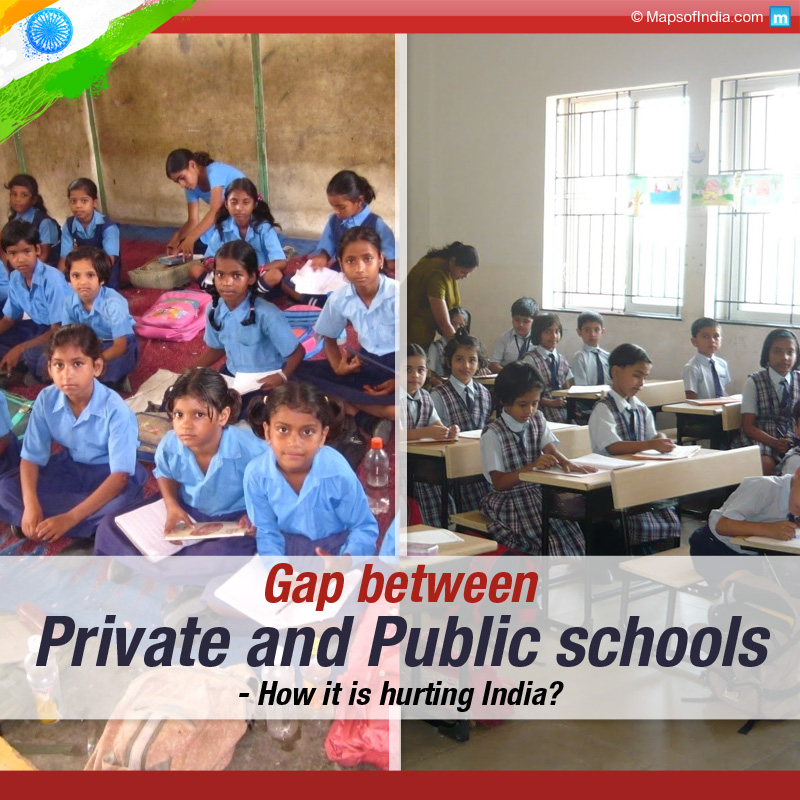The base of any nation that is willing to be a superpower in every sense of the term always needs to be commendably strong so that it is able to realize that ambition. One of the several ways in which this can be achieved is through education for one and all. India, as a nation, has taken some steps in that regard with the institution of steps such as compulsory free education for each child till the age of 14 years and so on. However, the real problem is perhaps not with the question of access to education but rather the quality of education being provided.
In India, there are two types of schools – the government owned and aided ones, and the privately owned schools. The government schools are indeed doing a commendable job of making education available to a greater number of people and are normally doing it for free or for fees that are really within the reach of everyone. They are of great help for people in urban areas for whom it is impossible to get their children to the more expensive private and government aided schools and in the rural areas, perhaps, they are the only ways in which children can get educated and dream of a better future. However, some teething problems do remain.
The government schools are not known to provide the standard of education and facilities for the students that are available at the ones that are aided by them as well as the private schools. In addition, these schools also see the wards dropping out a few years after starting with their education. Perhaps a major reason for this phenomenon is the paucity of jobs for the educated youth in India especially in the rural areas. After all, why would anyone want to be a postgraduate and then sit at home without a job? If one has to work in menial occupations even after being educated then it is better to start working in that sector and gather some experience – education in such a situation becomes a way of wasting time and that is one worrisome aspect.
Perhaps this is an area that the authorities in question need to look into if the education movement is to attain success in the rural areas. This is because the skill and competence of workforce is something that can make or break a nation’s fortune and India is no exception. Secondly, the government has been hiring many teachers for schools in the rural areas but they are not always reporting in time or not even coming at all for days on end and are yet being paid their full salaries, which is a sheer travesty of justice. If the teachers are not coming, then obviously the students do not report to school as well. On the other hand, since students are dropping out, in some places teachers are feeling disillusioned and leaving their jobs as well and this leaves the students who are willing to learn in a lurch. In this way the whole process of education is devalued and it is reduced to a farce.
In the urban areas, the problems, or rather the gaps, are of a different dimension. In the cities and towns there are the private schools that provide the best of facilities to their students and ideally are preparing them for a better future. However, the problem is that their fee structure puts them out of the reach of most and they are understandably not willing to lower the same since they require sufficient capital to procure the facilities they offer to the students. The government aided schools also offer similar facilities and are well equipped to include children from the economically backward sections in the region in which they are based. The same cannot be said of most of the governmental schools though.
The facilities over here are mostly in the same league with the private or even government aided schools and this is the reason that they are perhaps not in the position to prepare their students as well as the other two classes. However, since they have the maximum number of students, this implies that most of India’s youth is not well prepared to take on high level jobs and responsibilities. This inequality in human resource development is hurting India in several ways – it is not allowing the fullest development of the country’s potential workforce and is also perhaps influencing the decision of companies in India and outside to branch out to the rural centers with the sort of high paying and intelligence oriented jobs that are now the sole preserve of a few cities across the country.
It is said that a team is as strong as its weakest member and India lives in the villages. Until the supposed weaker sections of our great country are properly empowered it is better to not think of being one of the major superpowers of the world as such thoughts may never fully materialize.
Related Information:
The examination system in India





